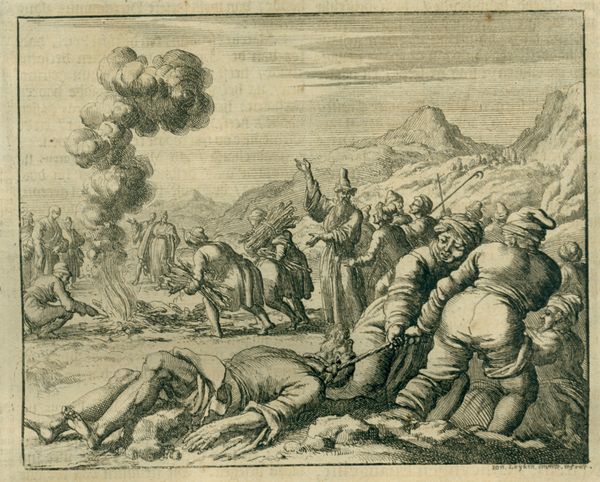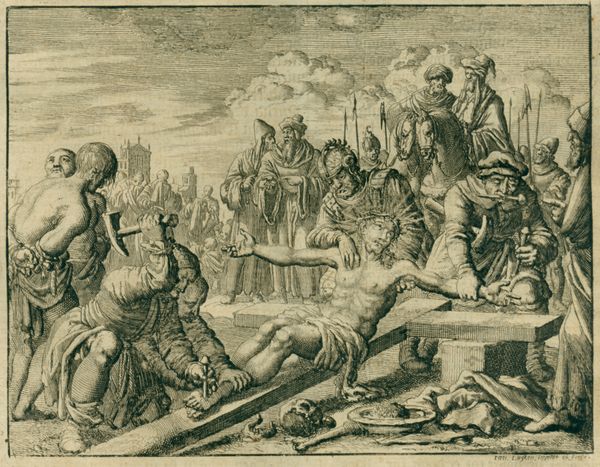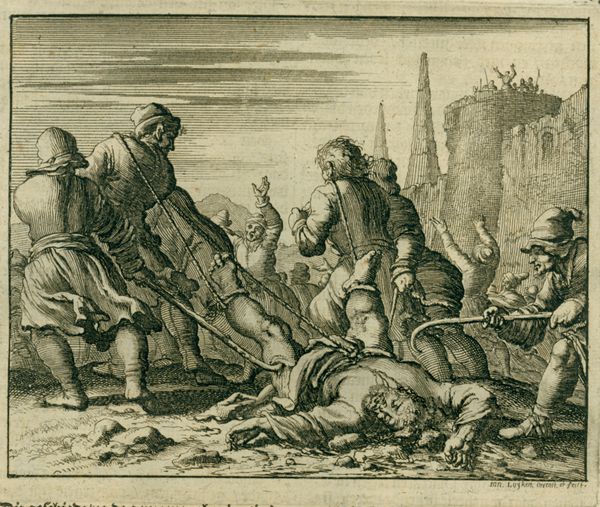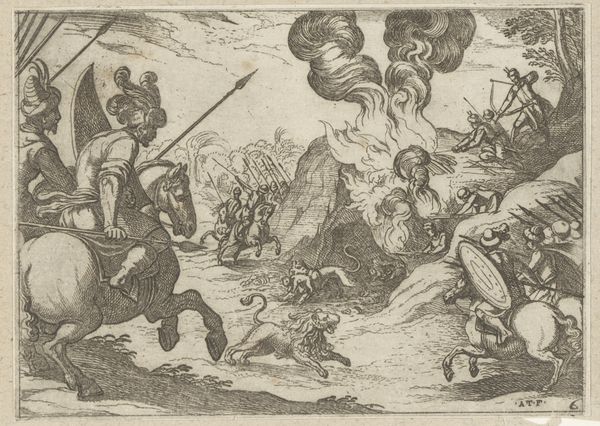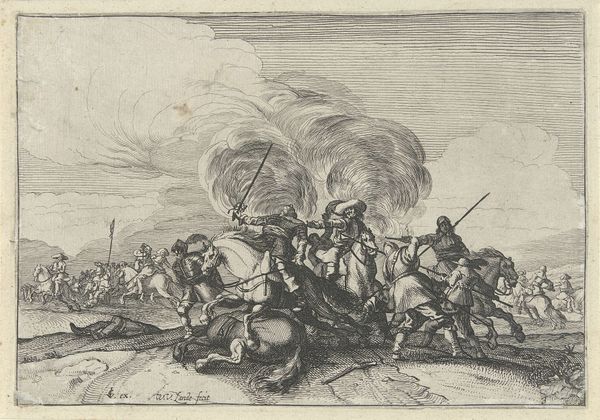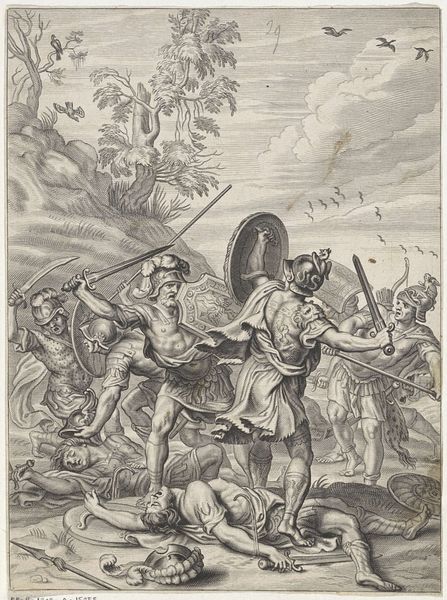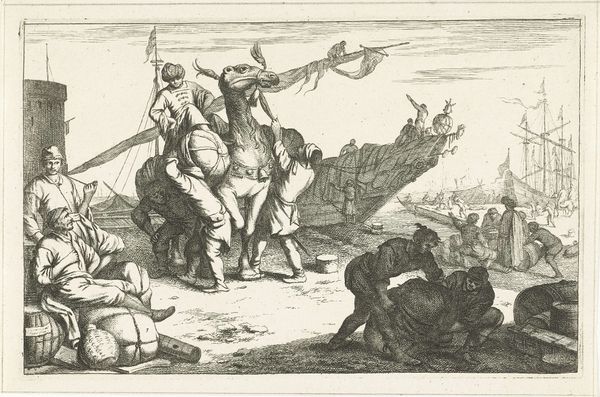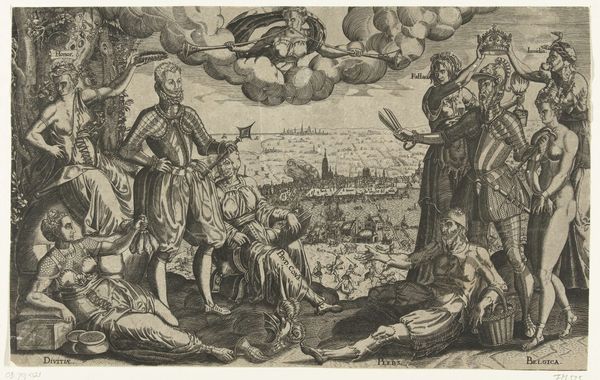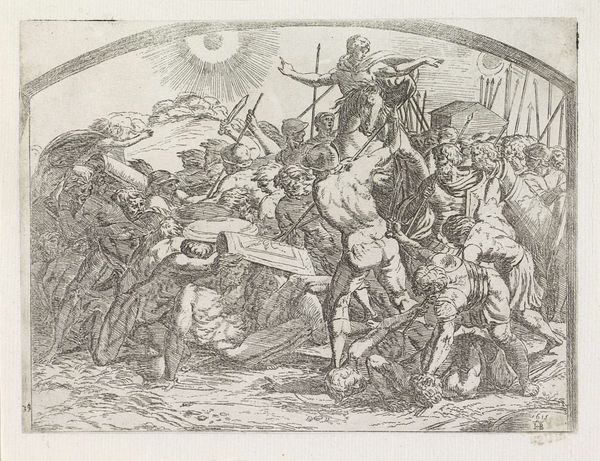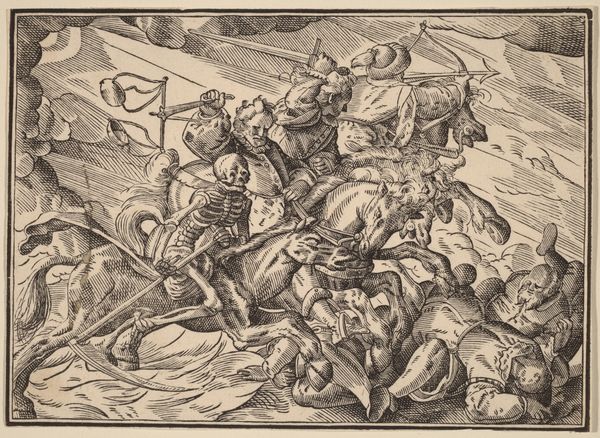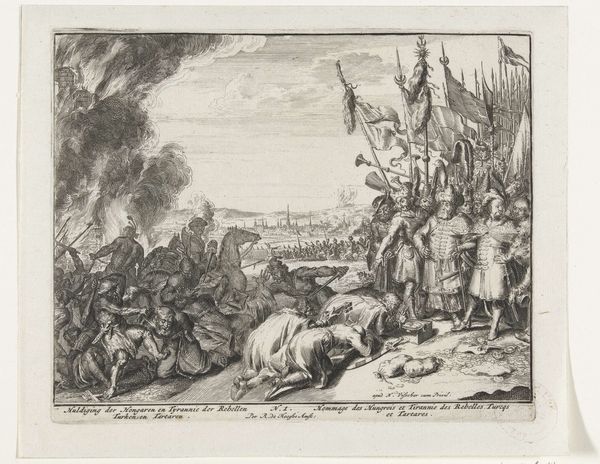
print, engraving
#
narrative-art
#
baroque
# print
#
charcoal drawing
#
history-painting
#
engraving
Copyright: Public domain
Curator: This print, "Burning of Dulcin and His Wife, Novarra, AD 1308," was created by Jan Luyken in 1685, utilizing engraving techniques to depict a rather gruesome historical moment. Editor: It’s arresting, isn’t it? Almost dreamlike despite the violence. I’m immediately drawn in by the contrast – this dance of shadow and light, the frenzied energy juxtaposed with what appears to be the stolid observation of the men in robes on the left... there’s something profoundly disturbing yet compelling about the image's rawness. Curator: The visual drama you're noting aligns with the Baroque style’s characteristic emotional intensity and dynamism, skillfully rendered via Luyken's printmaking. Look at the lines - how they carve out not only form but also texture, the way smoke curls, fabric creases. The choice of printmaking as a medium is quite interesting here, because it democratizes the distribution of such imagery; allowing this perspective on history to become more widely accessible. Editor: Yes! Democratizing horror, perhaps? It's almost as if I can hear the crackle of the flames, smell the… well, I'd rather not dwell on it. There’s a deliberate roughness here that lends it immediacy, a sort of visual reportage of brutality that aims straight for the gut. The artist isn't shying away from portraying the brutal reality of this event, that execution is shown alongside onlookers, power structures... a full picture. Curator: Precisely, and that's essential for understanding the social context of these prints. Prints like this, circulated widely, served as a powerful form of historical narrative and moral instruction, or even political propaganda in some instances. They informed popular opinion through imagery, and shaped public understanding of events like the burning of Dulcin. The event itself, the execution by burning of Dulcin, his wife and other members of his sect represents religious conflict. Editor: Propaganda... It makes me wonder about the hands involved in making the work, not just artistically but ethically, as this becomes a circulated version of events. Does the image attempt to justify or demonize, or both? Looking closer makes you wonder just who the villains really are in the narrative presented. I suppose images, just as the execution fires here, can also be manipulated. Curator: Indeed. It highlights the importance of examining not just what we see in art, but the conditions and motives that shape its production and consumption. This particular image presents many important questions. Editor: A sobering reminder of art’s potent capacity, its dangerous dance with truth and perception. I won't be forgetting those flames anytime soon.
Comments
No comments
Be the first to comment and join the conversation on the ultimate creative platform.
